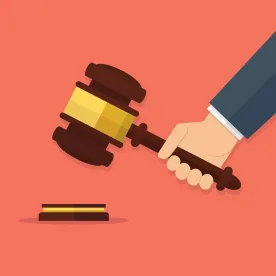Summary
The Supreme Court of the United States in SCA Hygiene Prods. Aktiebolag, et al. v. First Quality Baby Prods., LLC, et al., has held that the equitable defense of laches is no longer a valid defense to patent damages claims brought within the six-year damages limitation period of 35 U.S.C. § 286.
In Depth
The Supreme Court of the United States in SCA Hygiene Prods. Aktiebolag, et al. v. First Quality Baby Prods., LLC, et al., ___ U.S. ___, Case No. 15-927 (March 21, 2017), has held that the equitable defense of laches is no longer a valid defense to patent damages claims brought within the six-year damages limitation period of 35 U.S.C. § 286. The 7-1 decision was authored by Justice Samuel Alito, with a strongly worded dissent by Justice Stephen Breyer.
The Supreme Court’s decision emphasizes the Court’s prior copyright law precedent in Petrella v. Metro-Goldwyn-Mayer, Inc., in which the Court held that “[L]aches cannot be invoked to bar legal relief” “[i]n the face of a statute of limitations enacted by Congress.” In SCA Hygiene, the Court simply held that “[t]he question in this case is whether Petrella’s reasoning applies to a similar provision of the Patent Act, 35 U.S.C. § 286...We hold that it does.”
Case Background
Petitioners SCA Hygiene Products and SCA Personal Care (collectively SCA) make and sell adult incontinence products. In late 2003, SCA sent a warning letter to respondents (collectively First Quality) alleging that First Quality was infringing an SCA patent. First Quality responded that one of its own patents rendered the SCA patent invalid. SCA never responded to this allegation, and First Quality proceeded to develop, manufacture and sell its products. However, without informing First Quality, SCA filed a re-examination proceeding at the US Patent and Trademark Office to determine whether its patent was valid over First Quality’s patent. The re-examination ended in 2007 with the issuance of a certificate confirming the validity of the SCA patent. SCA did not inform First Quality of this event, but instead waited until 2010 to file suit against First Quality. First Quality moved for summary judgment based on laches and equitable estoppel.
Procedural History
The district court granted First Quality’s summary judgment motion on both grounds. The US Court of Appeals for the Federal Circuit affirmed the district court’s decision on laches based on its 1992 decision in A.C. Aukerman Co. v. R.L. Chaides Constr. Co. However, the Federal Circuit then reheard the case en banc to reconsider Aukerman in view of the Supreme Court’s decision in Petrella. The Federal Circuit, in its 6-5 en banc decision, held that laches could apply in patent cases, even during the six-year damages limitation period of 35 U.S.C. § 286, and nothing in Petrella would preclude that result.
Rather, the en banc Federal Circuit explained that notwithstanding the provisions of
§ 286, US Congress codified laches as a defense in § 282 when it included an unenforceability defense in that statute. Thus, the Federal Circuit found that laches could bar a damages claim even for acts occurring within the six-year period of § 286. The Federal Circuit also concluded, however, that Supreme Court’s 2006 decision in eBay, Inc. v. MercExchange required a change in the Aukerman rule that only pre-suit damages may be barred by laches. The Court explained that the availability of injunctive relief or ongoing royalties now depends on an analysis of the circumstances of the delay under eBay.
Cert. Petition
In its petition for certiorari, SCA argued that the en banc decision of the Federal Circuit conflicts with the Supreme Court’s decision in Petrella that, under the Copyright Act, laches cannot bar damages claims brought within a statutory limitations period, even though the initial violation may have occurred years earlier. SCA also argued that the Federal Circuit decision used a presumption in favor of laches that was inconsistent with Supreme Court precedent.
The question presented to the Court was…
Can the defense of laches bar a claim for patent infringement brought within the Patent Act’s six-year statutory limitations period (35 USC § 286), and if so, to what extent?
Supreme Court Decision
The Supreme Court reversed the Federal Circuit and based its holding, in large part, on Petrella, which eliminated laches as a defense in copyright cases during the Copyright Act’s 3-year statute of limitations period. The Court explained that Petrella’s reasoning applies equally to patent law. Most of the remainder of the Court’s opinion is spent on dismissing three of First Quality and/or the Federal Circuit’s positions that the Court found unpersuasive: (1) the Patent Act’s limitation period differs from the Copyright Act because the Patent Act does not contain a statute of limitations; (2) the Patent Act codified laches as a defense in 35 U.S.C. § 282; and (3) settled practice prior to the 1952 Patent Act allowed the defense of laches, and the 1952 Act did not change this.
The Court stated that Petrella’s elimination of laches in copyright cases relied on two principles: the difference between law and equity and the separation of powers. The Court found laches was designed to shield defendants in equity from stale claims, the same purpose statutes of limitations served in law. The merger of law and equity brought the two into conflict. To resolve that conflict, the Court held that statutes of limitations reflect a legislative judgment about the time to bring suit, which Courts cannot overrule based on the equitable doctrine of laches. The Court applied that reasoning to patent law, holding that the Patent Act’s six-year damages limitation is a similar legislative judgment. Therefore, laches cannot bar a claim for damages within six years of filing suit.
The Court then reviewed three potential distinctions between patent law and copyright law and held these were irrelevant. First, the Court reviewed the argument that the Patent Act’s damages-limitation period was not a true statute of limitations. The Court disagreed because each new copyright infringement was judged on its own statute of limitations, allowing a party to recover the past three years of damages in the same way as the Patent Act’s damages limitations period does. Second, the Court addressed the Federal Circuit’s holding that the Patent Act codified laches, while the Copyright Act did not. The Court was not convinced by this argument because the Federal Circuit failed to point to clear language in the Patent Act preserving laches. Finally, the Court reviewed historical cases that the Federal Circuit relied on to show a patent-specific practice of invoking laches within a statute of limitations. The Court found that the general historical rule barred the defense of laches within the damages limitations period and there was no established practice to the contrary in patent law. Thus, the Court applied Petrella to patent law and eliminated laches within the six-year damages limitation period, which effectively eliminates the laches defense altogether in patent cases.
Dissenting Opinion
Justice Breyer, in his dissent, agreed with First Quality and the Federal Circuit and found that the equitable doctrine of laches should remain as a defense to patent infringement. Justice Breyer disputed the majority opinion regarding the historical application of the laches defense in patent cases, citing numerous cases that recognized laches as a defense. Justice Breyer also recognized practical implications that may result from eliminating the laches defense in patent cases.
Justice Breyer reviewed 150 years of case law and found an almost uniform practice of applying laches to patent claims despite a damages limitation period. He suggested that the 1952 Patent Act was designed to codify that practice based on the inclusion of “unenforceability” as a defense. Justice Breyer agreed with the Federal Circuit that courts at that time understood laches was a defense to patent infringement and that Congress intended to codify the law in enacting the Patent Act in 1952.
With respect to practical concerns, Justice Breyer pointed out that the “lock-in” problem, which arises if the damages look-back period is patent law’s only limitations period. An unreasonable patentee could lie in wait, watching an infringer build its business and sell an infringing product for 15 years, only to suddenly file suit and collect damages over years 9 to 15 of the infringement. This puts the infringer in the difficult position of having made significant business investments in the product, making it difficult to settle and difficult to stop selling should it lose the lawsuit.
Note
The SCA Hygiene decision effectively knocks out the equitable defense of laches in all patent cases and opens the door for plaintiffs to wait for the entire life of a patent to file a complaint, even if the plaintiff became aware of its claim at the beginning of the patent’s life and waits the entire 15- to 18-year period while an industry or technology is developed.
The Court seems to suggest that Congress will need to amend the patent statute to specify “laches” in the list of defenses in 35 U.S.C. § 282 to avoid potentially unintended results of this decision. Going forward, courts will be tasked with determining what equitable considerations may prevent a patent from being enforced or raised as a defense to liability for infringement. Currently, courts will still be able to consider equitable estoppel.




 />i
/>i

